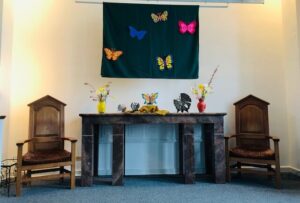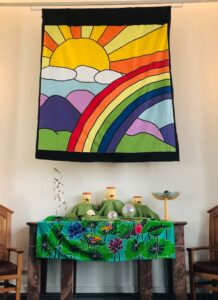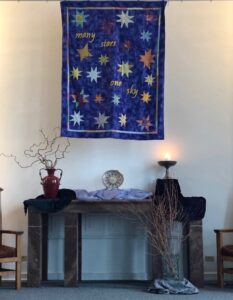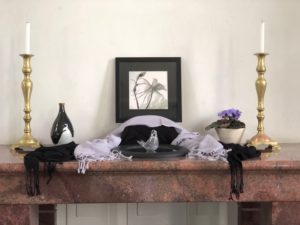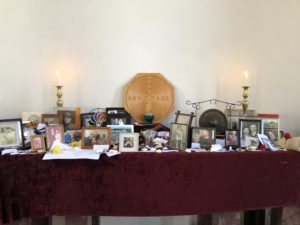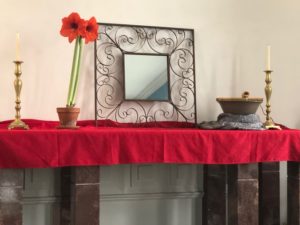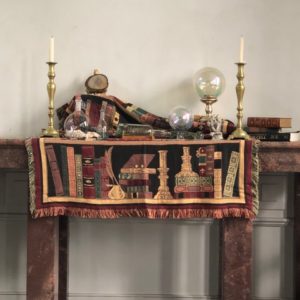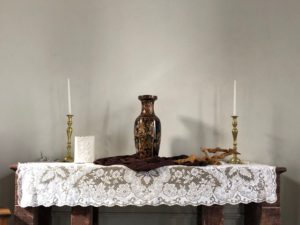This is the text of the reflections I offered on Sunday, May 26, 2019.
Every year until his death in 2012, Senator Daniel Inouye introduced legislation to change the date of Memorial Day from what it is now, the last Monday in May, back to what it had been before, May 30th (regardless of what day that fell on in any given year). That change occurred back in 1968. If Inouye, who entered the Senate in 1963, took up this cause immediately, he would have introduced this bill over 40 times.
Marking Memorial Day on May 30th goes back to the mid-1800s. The precursor of Memorial Day was Decoration Day. The “official” history, the one we most likely learned in school (if we learned about any of this at all), is that in 1868, three years after the Civil War ended, the head of an organization of Union veterans, Maj. Gen. John A. Logan, declared that May 30th should be a day for decorating the graves of the more than 620,000 soldiers who died during the war, “whose bodies,” he wrote, “now lie in almost every village and hamlet churchyard in the land.” It didn’t matter on which side of the war you’d fought – Logan believed that the ultimate sacrifice paid by both Union and Confederate soldiers alike deserved to be remembered. It is said that he thought the day should be celebrated in the spring, and that May 30th was chosen because it was a date on which no battle had been fought, making it a day to honor all the soldiers who died in all the battles of the war.
The story we most likely weren’t taught in school is that in 1865, at the very tail end of the war, as the white residents of Charleston, South Carolina fled the city in advance of the arrival of Union troops, the Black citizens remained, welcoming the troops back to the city where the war had begun four years earlier.
A makeshift prison for Union soldiers had been erected in the middle of what had been a race track. The men who died there buried hastily in a mass grave. After the Union soldiers arrived, Black workmen from Charleston dug up the remains of those soldiers and re-buried them with proper respect, creating a proper cemetery. Above the entrance they placed a sign that read, “Martyrs of the Race Track.” This new cemetery was dedicated on May 1st, with a parade that included 10,000 people and which the New York Tribune described as “a procession of friends and mourners as South Carolina and the United States never saw before.” It seems to me that this, truly, was the 1st Decoration Day, and is the real root of our modern Memorial Day.
But why did Senator Inouye, and a large number of veteran’s groups, care about the date on which Memorial Day fell? Why would he try year after year for more than forty years to get it changed? The last Monday in May is easy to remember and plan for; May 30th would be a Saturday one year and then a few years later it’d be a Wednesday; it’d keep moving throughout the week. Inouye fought for the change in part because the last Monday in May made it so easy to plan for. He, and as I said, a great many others, feared that what was going to be planned for each year was not how to honor the people who had died while serving in our nation’s military. Instead, people would be figuring out what to do with a three-day weekend and the official beginning of summer. In 2015, Marine Corps veteran Jennie Haskamp wrote a piece for The Washington Post in which she shared her frustration that meaning of Memorial Day had become “grilled meat, super-duper discounts, a day (or two) off work, beer, potato salad and porches draped in bunting.” She argued that it should be a day to remember and reflect on the truth that freedom comes at a cost.
Stephen Stills – of Crosby, Stills, Nash, and Young – wrote a haunting song called, “Find the Cost of Freedom” which came out as the B side to their song, “Ohio,” written about the Kent State massacre. The song is deceptively simple – it’s just two lines long:
“Find the cost of freedom buried in the ground.
Mother Earth will swallow you, lay your body down.”
Simple, right? The complexity, the ambiguity of the song comes when you ask yourself who it’s talking to and what it’s talking about. Soldiers are told that they are fighting for freedom, fighting to defend democracy, fighting to make the world more safe. And I don’t know anyone who has ever served in the military, especially during times of war, who doesn’t know all too well that those things come at a cost. Rows, and rows, and rows of headstones in Arlington National Cemetery; column after column, line after line of names on those polished black granite walls of the Vietnam War Memorial. More importantly, and more impactfully, the cost of this particular father/mother/brother/sister/friend who will never attend another Memorial Day picnic. This may not have been the band’s intention, but this song is talking to and about them.
At the same time, though, those who were protesting the military industrial machine also saw themselves as fighting for freedom; it was clear that they, too, needed to be willing to “lay their body down.” And nearly every mass protest since, nearly every concerted effort for change, has seen at least some, “buried in the ground.” The song talks to, and about, them as well.
There are a number of different kinds of freedom, all of which come at a cost.
A woman who speaks up about sexual harassment in the workplace, seeking freedom from the prison of misogyny, has often paid for that freedom with the loss of her position and having her reputation dragged through the mud. A trans teen who comes out, seeking freedom from the false identity society demands of them, may pay the cost of that freedom in rejection by family and friends, and all too often with emotional, psychic, and bodily harm. A woman of color who dares to speak her truth in her own voice, seeking freedom from the oppression of a society that demands she speak and act in ways acceptable to white folk, can pay for that freedom by having to endure an angry backlash and attacks on her character.
There is a cost to freedom.
When someone comes to realize that divorce is the right thing for them, seeking freedom from a painful and maybe even dangerous marriage, they pay for that freedom in friends who take sides, loss of income, or status, or the dream of what they’d thought life would be like. Choosing to leave the safety of a career, seeking freedom from something soul-sucking to pursue a passion, has the cost of the incredulity of those around them and the loss of what our society deems “security.”
The Catholic priest and Trappist monk Fr. Thomas Merton said that the purpose of our lives is to free ourselves from the “false self” in which we are trapped, so that we can live deeply, fully, richly the life of our “true self.” This is something every religious tradition teaches – that we live imprisoned in suffering, delusion, sleep, sin, not-life, and that we should wake up and strive for freedom.
In the Hebrew scriptures it is said that it took Moses and the Israelites 40 years of wandering in the desert after leaving their captivity in Egypt before they entered the Promised Land of Canaan. The distance between the two could actually have been traversed in less than two weeks. One rabbinic interpretation is that God led them on that long, wandering way because all of those who had grown up with a captive’s experience and a captive’s mentality had to die before the people could enter the freedom of the Promised Land.
Is there something in your life that you feel traps you, preventing you from living full and free? Is there something that you do, or don’t do, because you feel that you “should,” or that it’s “expected” of you? Is there some part of you that is stunted, held back, imprisoned? Our faith challenges us to risk the discomfort, the pain, even, of striving for freedom – ours and that of “all of us imprisoned,” as our Opening Hymn put it.
It tells us too, though, that there will always be a cost. The journey from what was to what can be always requires us to leave things behind, even things that have been precious to us; it always calls for a “death” of some kind. That is why so many of us so rarely attempt it. We fear the cost will be too high. Yet the experience of those who have come before us, and even our own lived experience, tells us that the cost of not making this journey, of remaining in our prisons, is even higher still.
This is one of the reasons that we so highly value community, because change is frightening and potentially dangerous … nearly impossible if we try it alone. Together, though, we can encourage one another, inspire one another, carry one another when the going gets really tough. And when we make it to the other side, enter the freedom of our own “promised land,” we may one day be able to look back at that which we left behind, that which had had to die, and then clean and decorate their graves knowing that the cost we paid was worth it.
May it be so.



